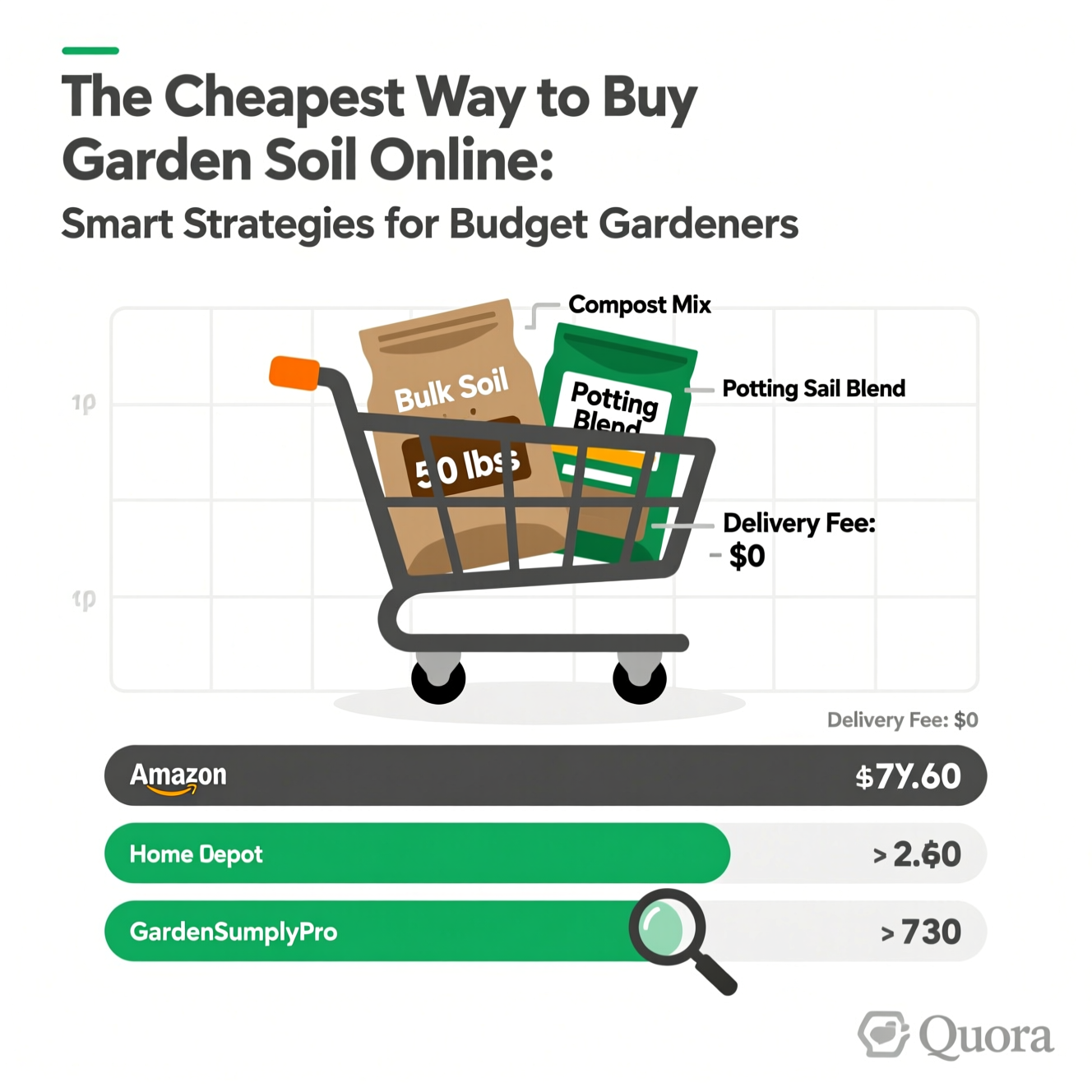What is the Absolute Cheapest Way to Buy Garden Soil Online?
To secure the cheapest garden soil online, prioritize bulk delivery options. This method significantly lowers the per-unit cost compared to purchasing smaller bags from local garden centers or online marketplaces. For most gardeners, buying in bulk is the most budget-friendly approach. Always compare pricing across various suppliers to find the most affordable option for your needs.
Buying in bulk, especially for larger projects like raised beds, drastically reduces the per-cubic-yard cost. Bulk delivery can be up to 40% cheaper per cubic foot than purchasing bagged soil. Look for suppliers offering delivery minimums that present the best price point per volume. This strategy ensures you are maximizing your budget for quality soil without overspending on convenience packaging.
When is the Best Time to Buy Garden Soil Online for Savings?
Savvy gardeners seek cheap soil deals by strategically timing their purchases. Online garden supply retailers often feature significant discounts during the late fall and early spring off-seasons. This timing precedes the peak gardening demand, enabling buyers to secure garden soil sales at lower prices. For most gardeners, waiting for these periods ensures better value.
Prices can demonstrably drop by 15-20% during these off-peak buying seasons, offering substantial savings on discount gardening supplies. Furthermore, consumers can capitalize on holiday promotions throughout the year. Events like Memorial Day or Fourth of July often present excellent opportunities for clearance items and bundled offers. Monitoring these specific sales events enhances purchasing power.
How Can I Get Free Soil for My Garden Online?
Discovering free garden soil online offers a sustainable approach to acquiring resources. Websites like Craigslist and local gardening Facebook groups frequently feature community soil exchange opportunities. Many individuals undertaking landscaping or construction projects have excess soil they wish to give away, making it a plentiful resource.
When seeking free soil offers, it is crucial to inquire about its history to ensure it is free from contaminants. This is a surprisingly common resource, often driven by homeowners undertaking renovations. In practical terms, you may need to arrange your own transportation, but the material cost is zero. Consider seeking compost donations from local municipal composting facilities as another excellent avenue for free, nutrient-rich soil amendments.
Are There Cheap Online Providers for Specific Soil Types (e.g., Potting Mix, Topsoil)?
Finding budget-friendly options for specialized garden soil online is achievable by looking at large horticultural suppliers. While universal “cheap” soil might exist, targeted mixes like potting mix or compost blends often offer superior value. These providers frequently specialize in specific soil types, ensuring quality and cost-effectiveness for various gardening needs.
A well-formulated potting mix can improve drainage and aeration by up to 35% over standard garden soil for containers. Modern experts recommend considering N-P-K ratios and organic matter content for the best value in budget soil blends. For most gardeners, purchasing these specialized soil products directly from online horticultural retailers that focus on such materials ensures competitive pricing and performance.
What are the Cheapest Ways to Add Nutrients to Garden Soil When Buying Cheaply?
Enriching bargain-priced garden soil often starts with economical, readily available organic amendments. Composting kitchen scraps and yard waste offers a highly cost-effective method for generating nutrient-rich material. For most gardeners, this process significantly reduces the need for purchased fertilizers. Locally sourced aged manure can also be a valuable addition to boost soil fertility and enhance its physical properties.
In practical terms, transforming waste into valuable soil inputs is key to fertilizing low-cost soil on a budget. Grass clippings, when properly managed, can also be incorporated to improve the soil structure, a critical factor for plants in newly acquired soil. Homemade compost can add essential micronutrients and improve soil water retention by up to 20%, demonstrating its significant impact on plant health. Furthermore, utilizing worm castings provides a concentrated source of beneficial microbes and plant-available nutrients.
How Much Garden Soil Do I Actually Need to Buy Online?
Calculating your garden bed soil volume is crucial. This ensures you buy the correct amount. Proper soil calculation prevents overspending and underestimation. For most gardeners, knowing how much soil to buy online starts with measuring. You’ll determine your garden bed dimensions accurately. This guides your overall coverage needs.
Measure the length, width, and depth of your garden beds in feet. Multiply these dimensions to get cubic feet. Then, divide by 27 to convert to cubic yards. Cubic yards are the common unit for bulk soil. A standard raised bed 4 feet wide by 8 feet long and 1 foot deep requires approximately 1.07 cubic yards of soil. Overestimating soil needs can lead to 10-15% unnecessary expenditure.
Can I Mix Old Potting Soil with Cheap Garden Soil?
Yes, you can effectively mix old potting soil with cheaper garden soil. This practice, often termed soil rejuvenation, can significantly cut costs for gardeners. However, careful preparation ensures success and prevents future plant issues. Experts recommend revitalizing old potting soil before blending it. This might involve incorporating new amendments like compost to replenish essential nutrients.
Rejuvenating old potting soil can reduce the need for new soil by up to 40%. When combining soils, a common guideline suggests using 50-75% new soil to 25-50% old, revitalized potting soil. Before mixing, it’s crucial to test the old soil for any lingering pests or diseases that could harm new plantings. This proactive approach is key for disease prevention.
In practical terms, a cheap garden soil blend benefits from the organic matter in old potting soil. Proper soil testing and amendment management are vital for optimal results. This approach enhances soil structure and supports robust plant growth when done correctly.

Tyler Grant runs our Tools & DIY testing lab, putting pruners, hoses, drip kits, and raised-bed systems through real-garden use. He documents builds, timings, and durability to deliver honest pros/cons and clear recommendations across budgets. Tyler’s guides include safety callouts, maintenance checklists, and step photos you can follow in a weekend.

